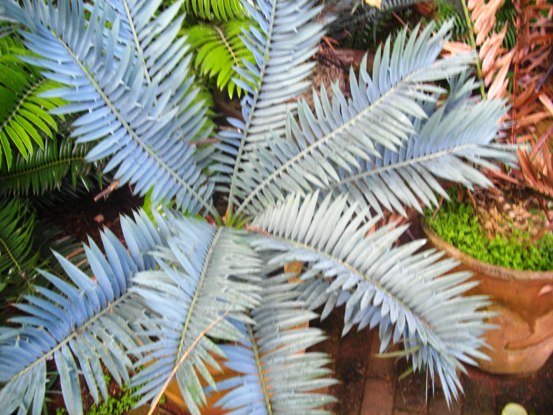Encephalartos trispinosus

Author: Ivan Lätti
Photographer: Ivan Lätti
Encephalartos trispinosus, the Bushman’s River cycad, is a commonly grown, smaller and variable cycad. Although slow growing, it is a popular clump-forming species that suckers much.
The leaves are various shades of grey or blue-green, also varying in size. The bluish rachis tends to recurve and to have a twist somewhere close to the tip. The petiole lacks prickles. The leaflets are non-overlapping. They have up to two spine-tipped lobes on upper and median leaflets (and a terminal spine), giving rise to the trispinosus specific name. Leaflets close to the base are often smooth-edged with no spinal lobes. There is a form with leaflets markedly twisted, while other plants commonly have flat leaflets.
Cones of E. trispinosus are initially blue-green, gradually turning yellow or greenish yellow when they ripen in summer. They usually occur singly, although some pollen-bearing cone plants sometimes produce a couple of the narrow male cones. The seeds of this cycad are orange-red to red; the scales have a wrinkled appearance.
The species distribution is in the central, coastal of the Eastern Cape, near the the Bushman’s River, the Kowie River and the Great Fish River.
The habitat is arid scrub and thicket in the open or shade of rocky valleys where the climate is hot and dry. The habitat population is deemed vulnerable early in the twenty first century, due to habitat alteration and plant collection.
The species resembles E. horridus and E. lehmannii, both of which are grey-leaved (Hugo, 2014; iNaturalist; www.cycadpalm.com; www.plantzafrica.com; www.wild-about-you.com; http://redlist.sanbi.org).

